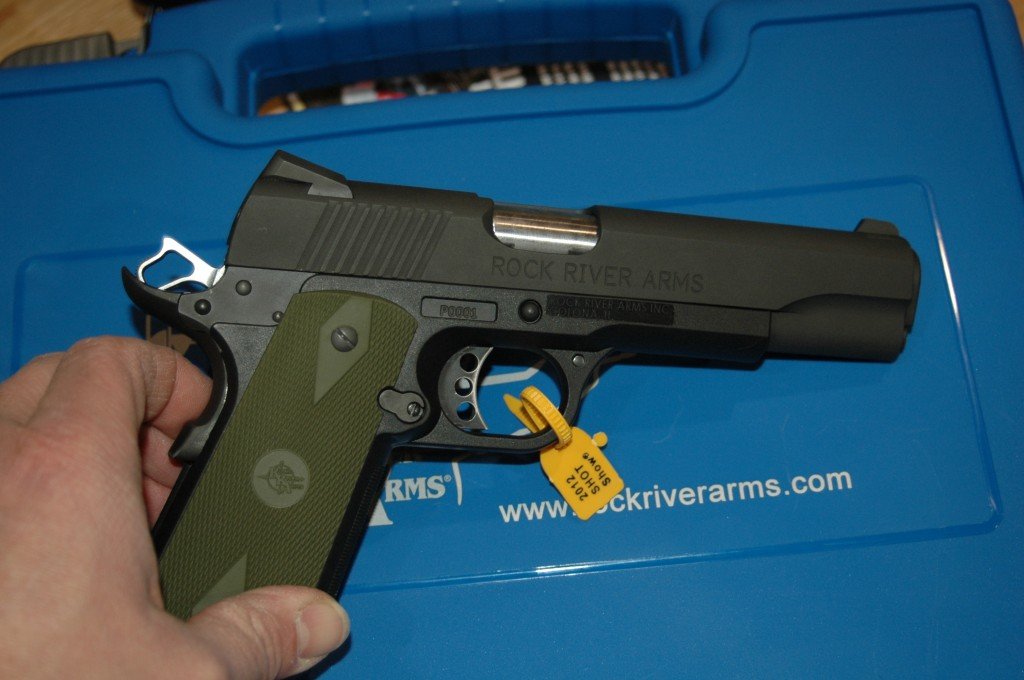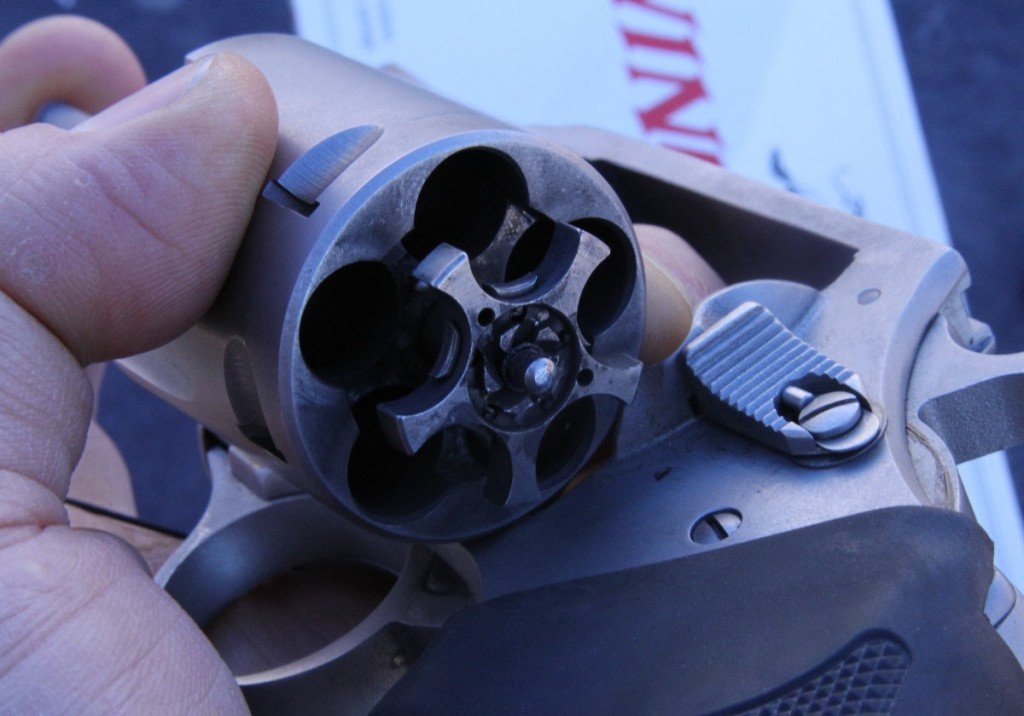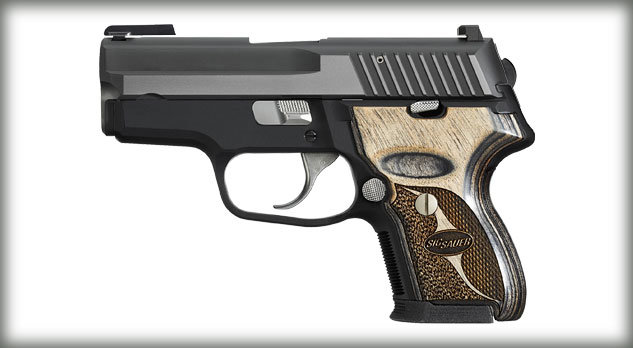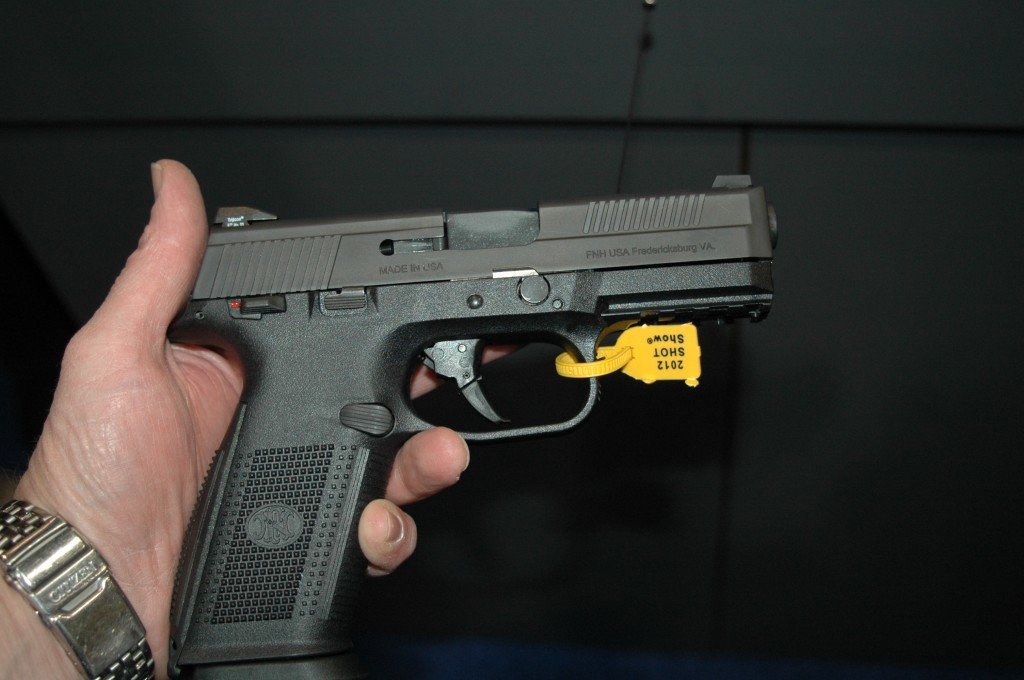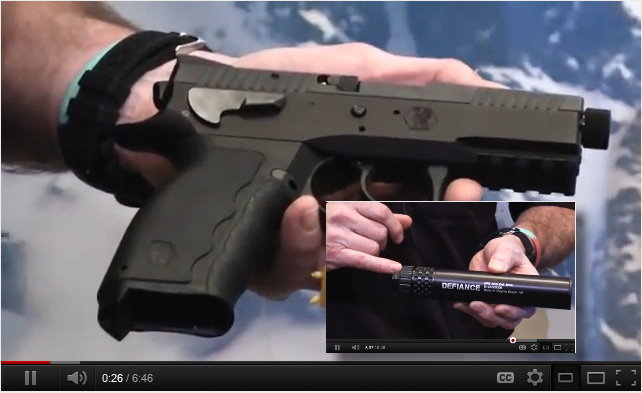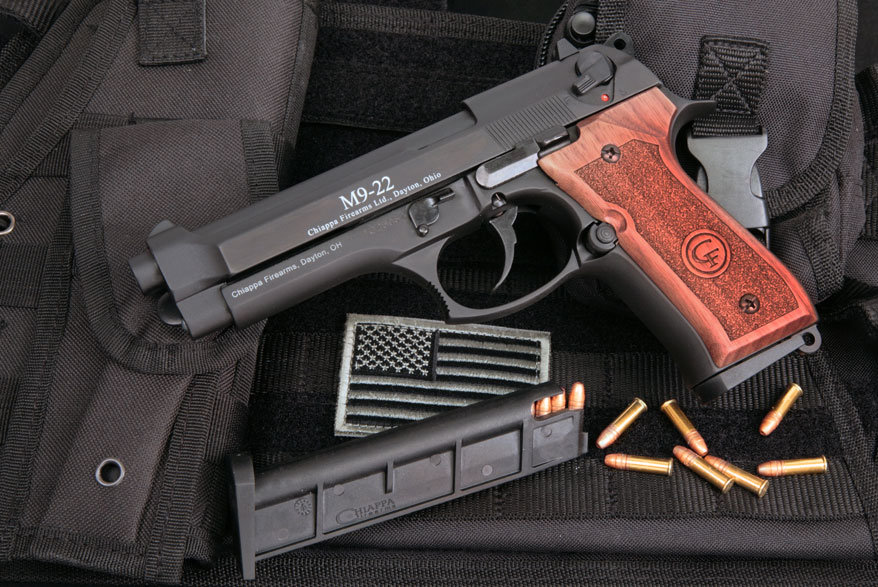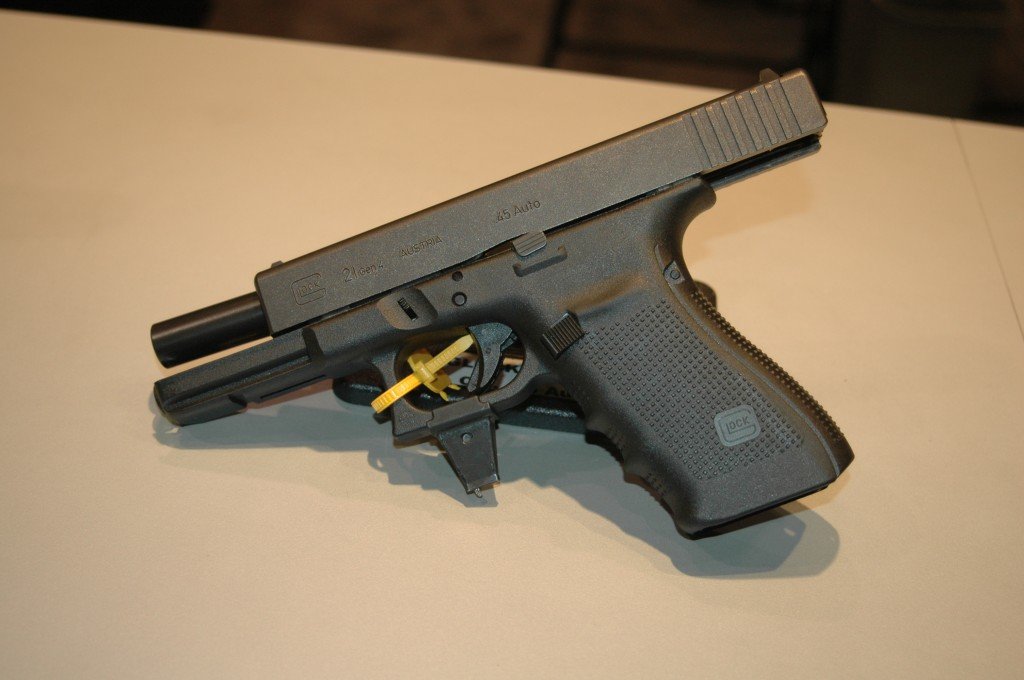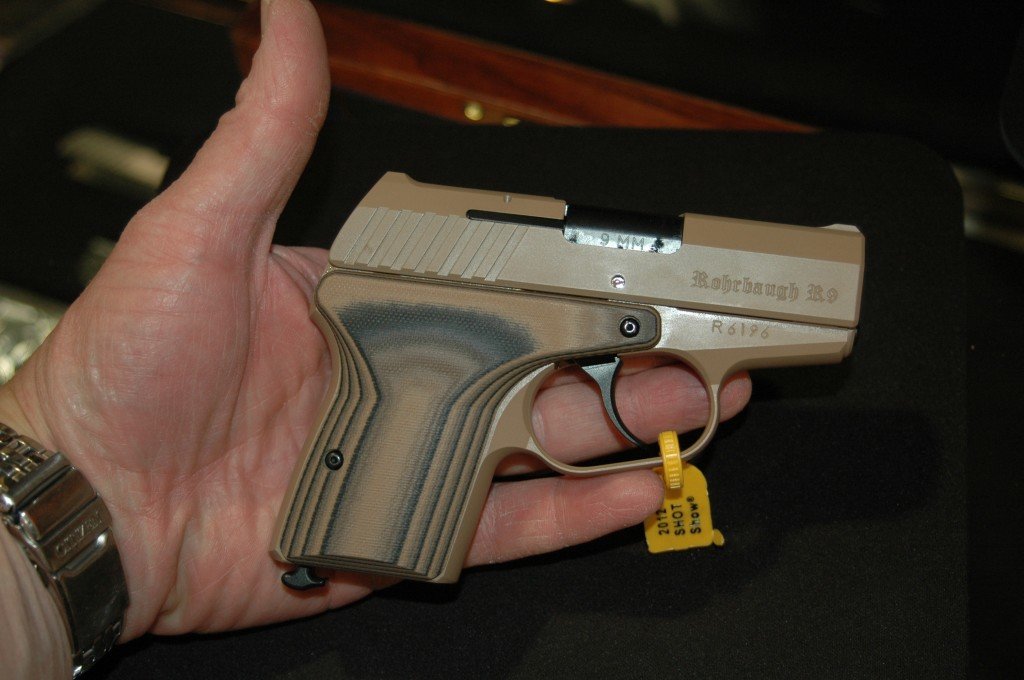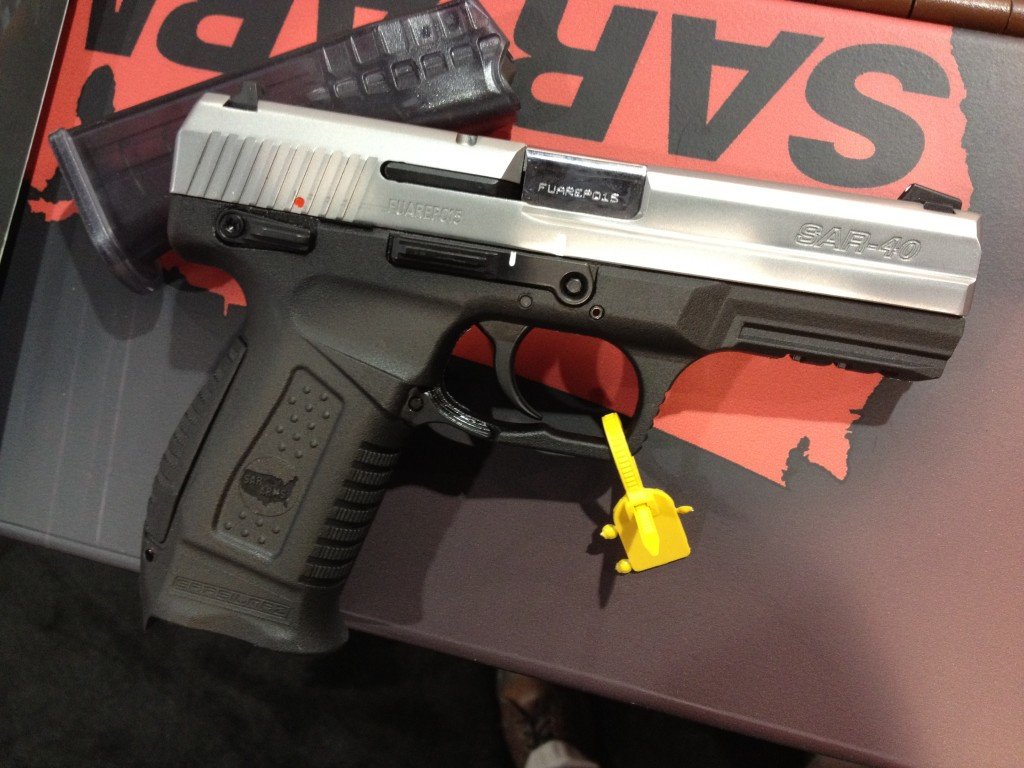A first look a the new Rock River 1911 with a polymer frame and machined slide. It feels a little different than a standard steel 1911, but this was just a first look on a prototype gun. At the projected price point of about $800, this new 1911 will be a formidable competitor in the market at that price point, and higher price points. Rock River doesn’t mess around with anything they do and this gun is truly impressive.
GunsAmerica Product Reviews – Pistols
Show First
Charter Arms .40S&W Revolver, Lefty Guns, Polished Pink!
Published: January 30, 2012 { 55 comments }If you carry a .40S&W duty pistol and would like to be able to use all those extra rounds in your backup revolver, Charter Arms has finally come to market with their affordable line of revolvers for rimless cartridges. The guns are currently available in gunshops and from what we saw at SHOT Show this year, they work great, even in the blowing sand of the desert with dirty cheap surplus ammo.
Sig Sauer 7.62 Rifle, P224 Doublestack Compact, 551-A1, SBRs!
Published: January 30, 2012 { 45 comments }Sig Sauer brings a lot of new products this year, and they all have the common theme that they are based on guns we already know and love, and probably even own, from Sig. The P224 pistol is the same doublestack 9mm, .40S&W or .357Sig. as your P226, but in a compact for concealed carry. The SIG716 is a 7.62NATO rifle based on the successful SIG516 platform, the M400 is finally a standard AR from Sig for you police armorers & Sig enthusiasts out there, and the 551-A1 is just like the Swiss 550 on which the 556 is based. Also SBRs!
FNS-9 & FNS-40 – New Striker Fired Pistols From FNH
Published: January 25, 2012 { 28 comments }Everyone loves the hammer fired guns from FNH and now they have a striker pistol in pre-production that looks to be yet another great gun, and a serious competitor in the striker fired pistol market. FNH guns are known to be extremely reliable and a great value, and the FNS looks to be yet another one.
Sphinx Pistols and Defiance Suppressors – VIDEO POST
Published: January 22, 2012 { 8 comments }We saw the Sphinx line of pistols last year at Media Day at the Range, SHOT Show 2011. For 2012 the importers, KRISS, have a new model for us made specifically for “operators” and heavy duty competitors in the case of the pistol. The Sphinx pistols are novel because they are in three pieces, and all pieces can and usually are made of 3 different materials. The Defiance Suppressors are unique in that they are adjustable for point of impact, to match your gun with the can off or on. Truly an OPERATOR tool.
Chiappa’s Beretta 92/M9 .22 Replica
Published: January 22, 2012 { 29 comments }Many shooters will recognize Chiappa as the company offering the distinctive Rhino revolver. That innovative design fires from the bottom cylinder resulting in recoil dynamics that tame loads otherwise punishing to shoot in conventional snub-nose revolvers. But that’s not all Chiappa has. They also offer a line of dedicated rimfire guns that replicate the look, feel and function of popular defensive firearms including the 1911 pistol and M4 carbine. New this year is Chiappa’s rimfire version of the Beretta M9 pistol called the M9-22.
Glock 21 & 32 Gen 4 at SHOT 2012
Published: January 20, 2012 { 29 comments }OK, if you’ve read some of my earlier articles, you’ll know I’m a pretty stout Glock fan. I’ve carried one or another Glock pistol almost consistently since 1991. So when Glock came to SHOT, I couldn’t wait to get to their booth and see what was up for this year…
I found Glock’s pretty huge chunk of real estate in SHOT and there took a look at their latest and greatest. For this year, the Gen 4 marches on in two new models, the Glock 21 in .45 ACP, and the Glock 32 in .357 Sig.
Rohrbaugh – The Original Mini-9mm Returns!
Published: January 20, 2012 { 43 comments }Many people have seen or heard of Rohrbaugh Firearms. They made the first mini 9mm I ever heard of, the R-9. It was a 6+1 shot aluminum frame semi-auto that shook the firearms world at SHOT show in 2002 when the prototype was introduced. The gun came into full production in 2004, and then was named by Shooting Illustrated as Handgun the Year in 2005. It is a truly tiny package that they say is very easy to shoot.
SAR Arms Striker Pistol from Turkey
Published: January 19, 2012 { 20 comments }The first thing I realized at SHOT show this year, was how many firearms companies there are that were new to me. One of these was SAR Arms.
Funny thing is, this company shouldn’t be new to anyone. SAR Arms is the importer / distributor for the Sarslimaz firearms group, who is one of the largest manufacturers of small arms in the world. They are based out of Turkey, and have a 125-year history of making guns of all kinds. They have an extensive line of shotguns, as well as pistols. Some of these pistols are based on the well-respected CZ-75 system. Today, they use state of the art CNC and CAD/CAM systems to make these modern weapons for the world market. Many of these weapons are chosen by Turkey’s military and see time on the battlefield.
Kahr CM40 CCW Pistol
Published: January 19, 2012 { 40 comments }When I first reviewed a gun from Kahr Arms in 1995, I was impressed enough with the design, workmanship, and function that I surprised my mother with a Kahr K9 as a carry gun. Ordinarily, getting my mother the right gun is like trying to get her the right pair of shoes, but in this case the K9 went over with great success. At the time, it was one of the smallest 9mm handguns on the market. Its “slick” slide is ideal for concealed carry, and the silky smooth factory trigger pull has to be tried to be appreciated. If there are any qualms, it’s that the K9 is a bit heavy (compact polymer-framed guns were not readily on the market then) and its $600+ price tag (in 1995 dollars) was as much as one month’s mortgage payment. Since then, more states have passed “shall issue” laws. The results are increased demand for carry guns, more carry gun options, and more competitive pricing.

